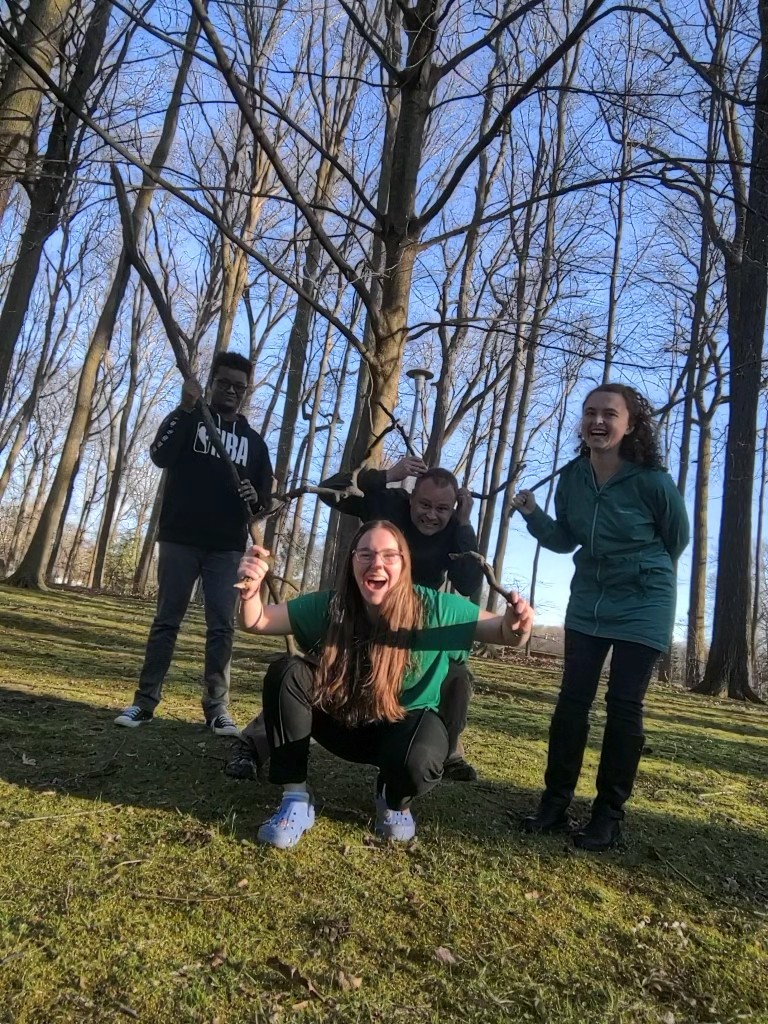I had a blast this weekend traveling with three Wooster students to the spring meeting of the Eastern Great Lakes section of the American Physical Society, at Kettering University in Flint, Michigan. Two students (Junior Tali Lansing and Senior Kelsey McEwen) presented research there performed by them while at Wooster. Tali presented her work done with professor Niklas Manz using a chemical wave system to model phenomena that occur near the event horizon of a black hole. Kelsey, my senior independent study student, presented her work modeling the trajectory of small transparent particles illuminated by strong laser beams. Yohannes Abateneh also attended, and is making good progress on his own research extending Kelsey’s work, which I expect he may present at the next EGLS meeting this fall!



A highlight of the meeting for me was seeing Wooster Physics alum Joseph Smith ’15, who is now a professor at Marietta College, receive a region-wide American Physical Society award: the Doc Brown young investigator award. Professor Smith brought four undergraduate presenters to the conference from Marietta!
Our students also reported back to me with their own highlights:
Tali: I chose to attend the talks about biological, chemical, and medical physics. It was interesting to hear about all of the different research going on, but I was most interested in Mahsa Servati’s presentation. She discussed the importance of diagnosing every mutation that can be present in one GBM because it impacts the chemotherapy and radiation treatment plan.
I appreciated meeting undergraduate students from all over our region. There was a great sense of community and support within our group.
Kelsey: I really liked the talk about lasers damaging dielectrics. The speaker explained it really well, so I understood what he was talking about despite knowing nothing about the subject. [Note from Dr. Leary – that was Prof. Smith ’15’s talk!]
Yohannes: I mostly attended the Nuclear and Particle Physics talks. The first one was concerned with Deriving Doppler’s effect using Maxwell Equations by assuming a relative velocity between light and an observer. The second talk was concerned with correcting measurements made on the terms on the emission sources from the collision of nuclei material. Last from this section was concerned with correcting deviations between predictions made by the standard model and measurements in hadronic B decays. I wasn’t really able to follow much of this talk since I haven’t taken particle physics. The last talk I attended was concerned with a condensed matter representation of the solar core. It was concerned with trying to explain things like the perihelion precession through a model of a lattice structure that was asymmetric.
If you are a Wooster student reading this and are interested in attending a future physics conference, just reach out to us and we will work to make it happen!

Thanks, Mark! I enjoy reading your posts as well.